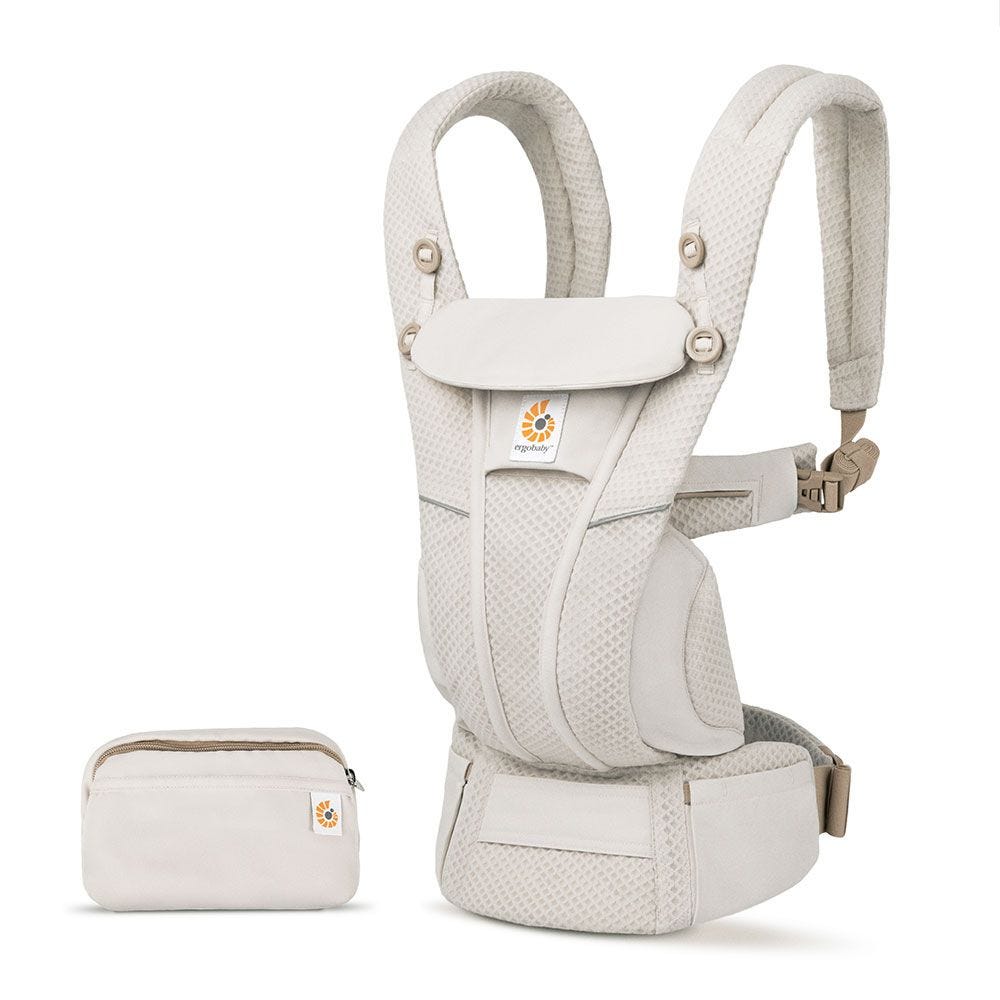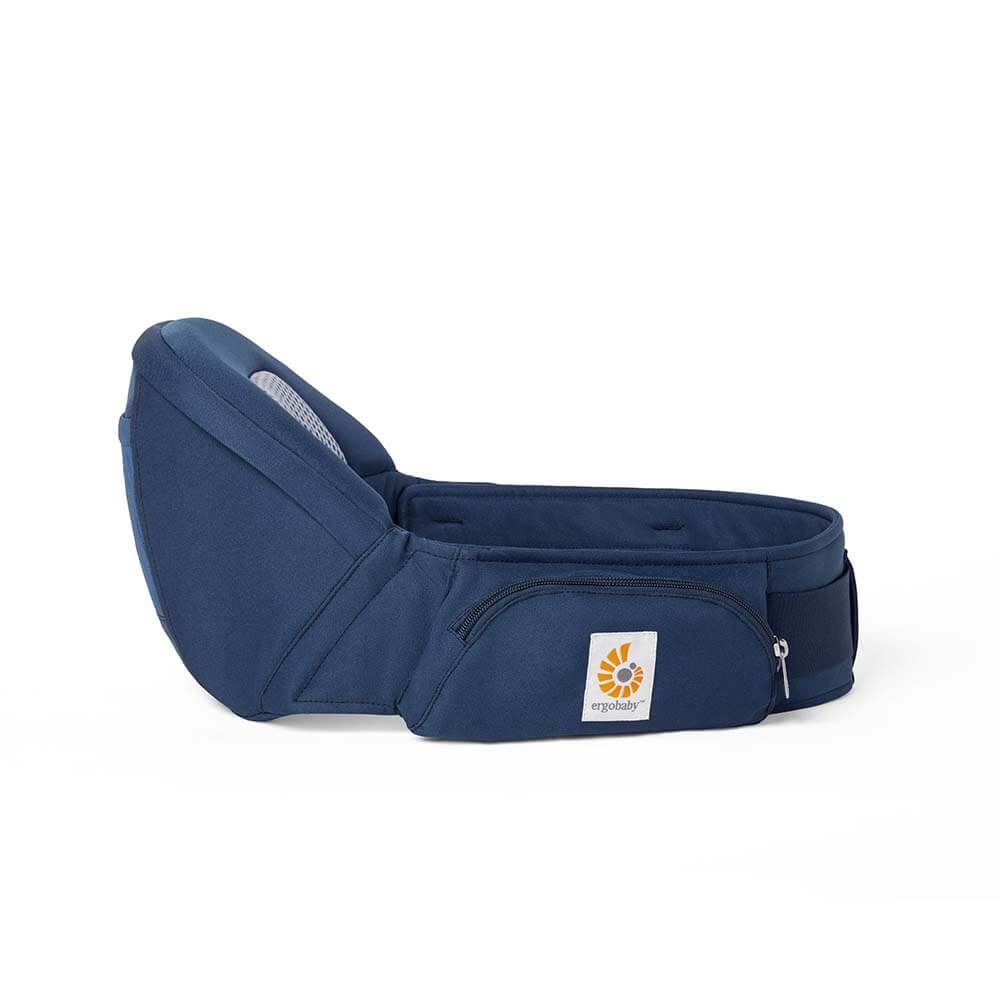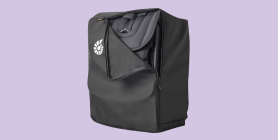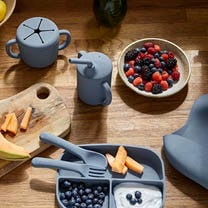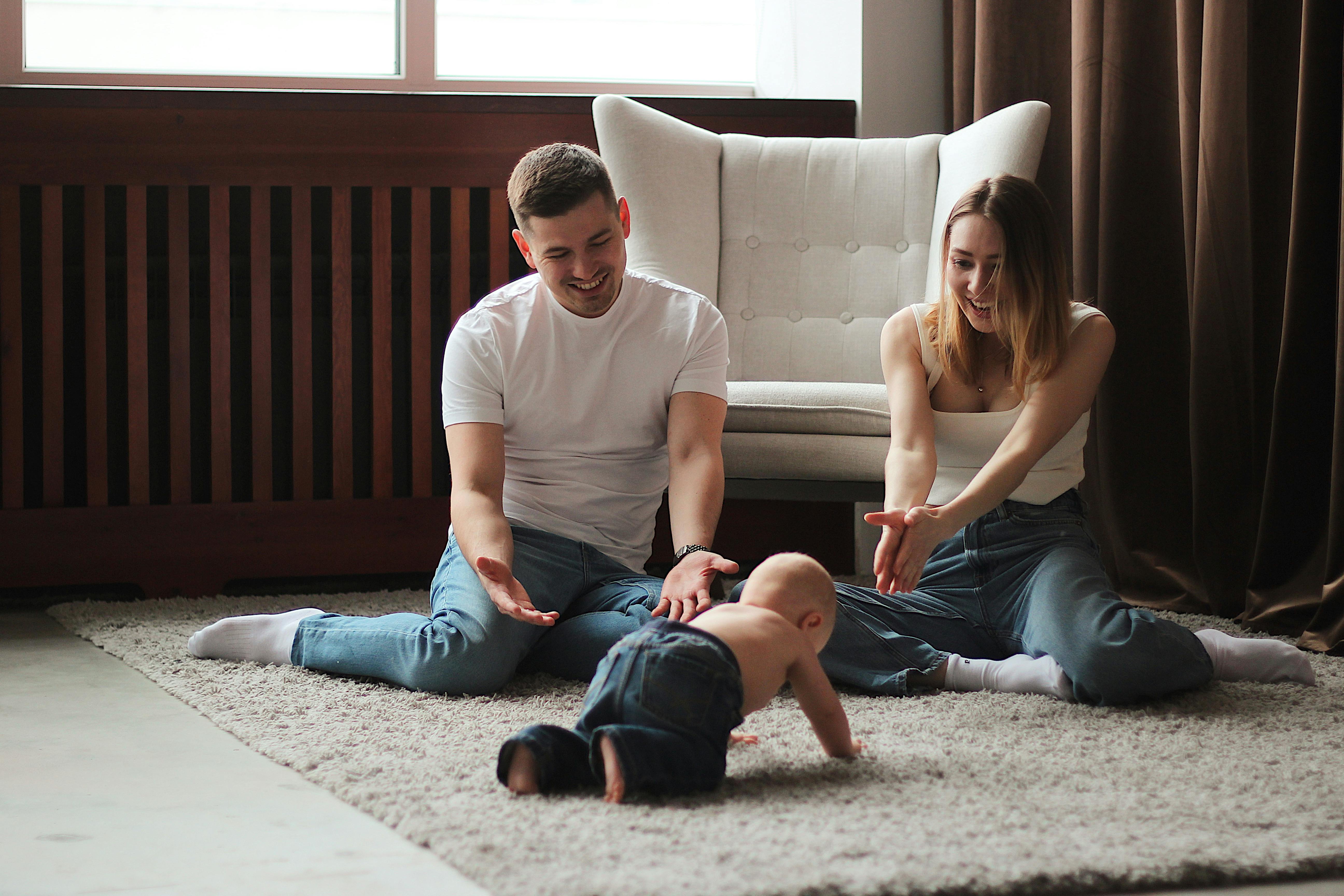
What an exciting milestone in baby's development: crawling! At last they can expand their range of movement more quickly and independently. Crawling is baby's first important step towards independence. But when is it time? When do babies start crawling? And how can you as parents and carers encourage crawling? In today's blog article, we want to give you everything you need to know about the big milestone of crawling. What can you expect in the different phases? What different crawling styles are there? How can you support your baby? And when do you need to see your GP if it’s not happening?
Independence, here I come! When do babies start crawling?
On average, most babies can crawl at around nine months old. However, like with everything, every baby crawls at their own pace. Some children are ready at six months, while others may not start until nearer their first birthday. You can recognise from these early signs that your baby is starting to learn to crawl:
- Getting stronger during tummy time: Babies who increasingly lie in a prone position (on their tummies), lifting their head and chest, are building up the necessary muscles to start crawling.
- Sliding or army-crawling: From around seven months, some babies experiment with other movements that allow them to move around. For example, they slide around on their tummy or push themselves backwards lying on their tummy. With the right motivation they will soon be able to move forwards in an army crawl..
- Rocking back and forth: Around the end of the seventh month of life, many babies begin to rock back and forth on their hands and knees. This is an important precursor to crawling.
What to do if my baby skips crawling?
Crawling is an important milestone because it trains the coordination of arms and legs with every step and thus develops balance but not all babies crawl before walking. Some skip crawling altogether and go straight to walking. If you’re worried, then speak to your health visitor or GP, they’ll be able to advise you on steps you can take if necessary.
The crawling phases
Babies usually go through several phases before they master crawling:
1. Prone position (0-3 months)
The prone position (tummy time) is an important step towards crawling. It helps your baby to develop and strengthen the necessary muscles in the neck, arms and torso.
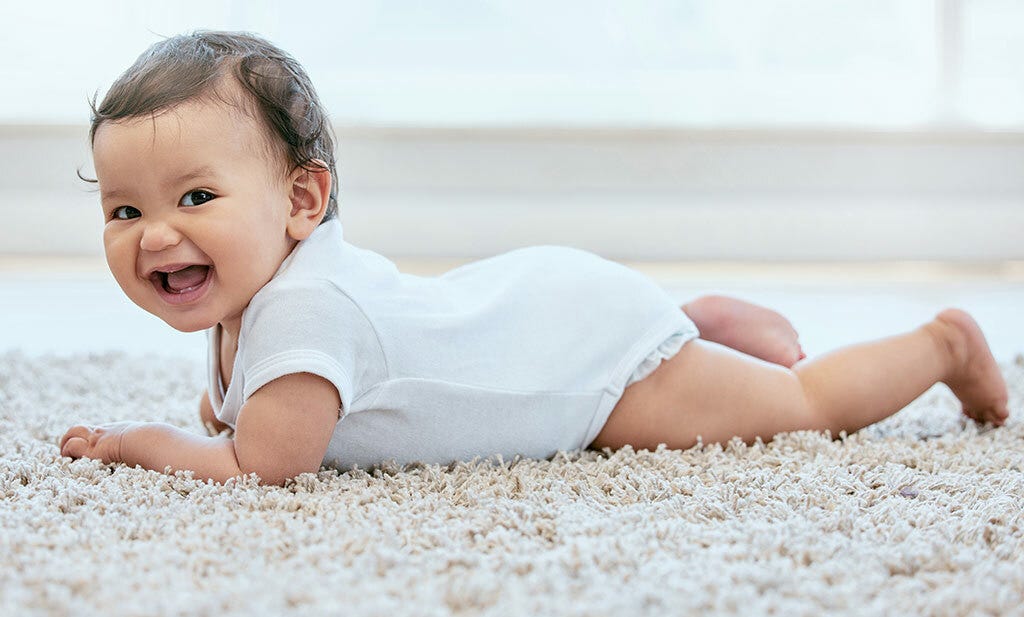

2. Turning (4-6 months)
As soon as babies can turn from their back to their tummy and back again, they develop the coordination they need for crawling.
3. Rocking back and forth on hands and knees (8 months)
From the end of the seventh month, babies begin to move from sitting to being on their hands and knees. The more often they do this, the more comfortable they feel in this position and begin to rock on all fours. This allows them to practise the movements required for crawling.
4. Sitting (8-10 months)
Sitting with their legs out, leaning to the side, propped up on their hands - these are all sitting styles that your baby will go through in these months. Learning to sit - without support - helps to develop balance and muscle control. And remember, until your little one is able to sit independently you shouldn’t sit them up. Their spine and muscles aren’t ready!
5. Crawling forwards (9-10 months)
After practising diligently for a few weeks, most babies now understand how it works and start to crawl forwards.
You can find even more information and details about baby development in our blog series ‘Baby’s developmental milestones with Ergobaby: baby’s first year’.
Different types of crawling
Did you know that not all babies crawl in the same way? These are the most common forward movements:
-
Classic crawling
This is crawling as it is written in the book: your baby crawls forwards on hands and knees. They use their arms and legs alternately to move forwards.
-
Bear walk
In this movement, babies crawl on their hands and feet. Their knees do not touch the floor.
-
Army crawl
Army crawling is when your baby pulls their body forwards with their arms while keeping their tummy on the floor.
-
Crawling like a crab
Babies who use the crab crawling style move sideways and not forwards just like a crab..
-
Bum-shuffling
In bum-shuffling, your baby pulls themself forwards sitting on their bum. They use their arms and possibly a leg to scoot around.
How to help babies crawl
Do you want to help your baby crawl but don't know how? Then we have a few tips for you:
1. Practise the prone position again and again
We have already emphasised how important the prone position (tummy time) is in the learning process for crawling. Therefore, integrate it into your play with your baby every day. This strengthens your baby's muscles and encourages them to push themselves up with their arms.
2. Use toys as a motivator
A toy just out of your baby's reach works wonders. Their natural curiosity will encourage them to move in its direction.
3. Provide a safe play area
A large, soft, open space allows your baby to practise crawling without obstacles. Make sure it has a non-slip surface such as a carpet or a padded mat. Socks with grips also work wonders.
4. Be a role model
If you want to encourage crawling, you need to be a role model for your baby. Get down on the floor yourself and crawl together with your baby or show them how to do it. Babies love to imitate their parents!
5. Reduce baby's time in the bouncer or other devices
Make sure that your baby can lie unrestricted on the floor as often as possible and move around freely. Limit the time they spend in the bouncer, swing or highchair the older your baby gets. While baby equipment like baby bouncers are a helpful and safe spot for your baby, it's important to balance that with plenty of free movement and tummy time for healthy development.
Safety tips for crawling
As soon as your baby starts crawling, it's high time to make your home childproof.
-
Tape all sockets or take care of socket fuses. Cables should be secured or removed to prevent accidents.
-
Install baby gates to stop your baby getting onto the stairs.
-
Remove all small parts that your baby could put in their mouth and swallow. There is a choking hazard here.
-
Secure furniture, appliances and decorative items so that they cannot tip over if your baby pulls themselves up on them.
-
Pointed and sharp furniture edges can lead to nasty injuries. Protect them with corner or edge protectors.
-
Check if your houseplants are poisonous/toxic and keep them well away from baby if so.
When should I see the GP/a paediatrician?
Every child has their own pace when it comes to learning to crawl. The age range is really wide. However, if you notice any of the following aspects, it makes sense to chat to your health visitor or GP:
-
Your baby is not crawling at 12 months and shows little or no interest in crawling or movement in general.
-
Your baby seems to have difficulty using both sides of the body equally.
-
You have general concerns about your baby's muscle tone and coordination.
-
Your baby has not yet reached other milestones such as sitting up at 12 months.
And as always, if you are worried about anything at all then don't hesitate to ask your health visitor or GP for advice. It's better to be safe than sorry. And if there is a problem, early intervention can usually be helpful.
When do babies start crawling? A conclusion
Crawling is an important milestone on your baby's path to independence and mobility. Although the timing and style can vary, most babies are ready from the ninth month - provided you practise lots of tummy time, motivate your little one and provide a safe environment. So that answers the question ‘When do babies start crawling?’. The next goal would be to sit upright and stand on their own two feet. And that's where you’re heading very quickly. But for now: have fun chasing your newly on the move baby!
--------------------------------------------
Featured Photo by Yan Krukau from Pexels
While baby carriers are fantastic for mobility and closeness, depending on the adventure of choice you might want to be a stroller along too.
There are a LOT of baby stroller options on the market. So we understand how confusing it can be to choose the one that’s right for your family. Not only are there a variety of brands, but a variety of strollers that serve different purposes.
There are a few types of strollers on the market:
- Full-sized stroller: This is typically the stroller parents thing of buying for all its versatility.
- Lightweight or umbrella stroller:These compact strollers are perfect for on-the-go adventures.
- Jogging stroller: Designed for parents who want to combine fitness with outdoor adventures.
- Double stroller: Designed for parents with multiple kids, especially twins.
- Car seat carrier: These strollers connect to a specific car seat. We don't typically recommend these as they can be unsafe for baby and uncomfortable for parents who are pushing.
Learn more about the types of strollers and which one would be best for you.
Benefits of Bringing a Stroller
- Storage Space for Gear: Ample room for carrying all your essentials like a diaper bag, beach toys and more.
- Shade and Weather Protection: Built-in canopies to shield your baby from the sun when they are lounging.
- Options: If you have more than one kid, you can stroll with one and carry the other. Or, if you’re getting warm or your little one is getting fussy, you can switch up their position from stroller to carrier or vice versa.
Safety Tips for Strollers
- Ensure your stroller is in good working condition. Make sure buckles are still buckling and that there are no rips or holes that could compromise your baby’s safety.
- Use sunshades or bug nets to protect your little one’s skin.
- Securing the baby properly: always buckle up your baby for safety even if you think they are old enough to go without the buckle.

